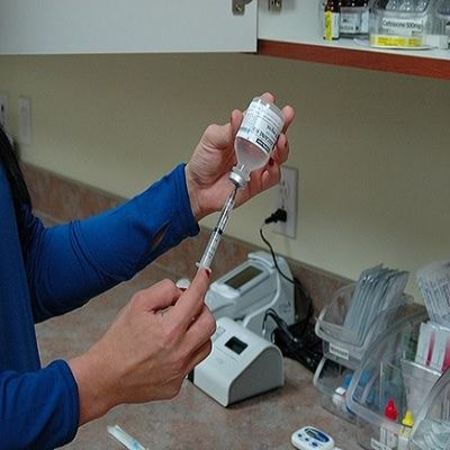This study aimed to develop clinical decision support (CDS) tools to decrease errors in medication administration, which have been shown to be frequent and serious. Notably, the rate of preventable adverse drug events in intensive care can be twice as much as in non-intensive care units.
Researchers from the University of Alabama at Birmingham, focused on providing decision support for nurses who administer IV medications, which are known to be high risk and a frequent source of serious adverse events. The new CDS tools — colour coded alerts and embedded hyperlinked drug references linked to the medication administration record — were developed as part of a simulated clinical information system that includes the relevant and realistic elements of the actual clinical environment.
"Using simulation in this study provided a method for testing new information system design, related to a potentially dangerous procedure, in a manner that eliminated the hazards of potential unintended consequences for patients," the authors write in a report published in the International Journal of Medical Informatics. "Nurses were more likely to attend to alerts when they were colour coded by level of potential danger."
Methodology
A mixed-methods design was utilised in this study. First, observations of medication administration practice were used to inform the design of a simulated information system with a variety of decision support tools. Three different types of medication administration CDS included in the simulated system were:
Then, nurses were observed administering medications in a simulated laboratory (similar to an actual patient care area on an ICU unit) using the simulated system.
Finally, the nurses participated in focus groups to provide input into system tools design. Observations of nurses’ use of the CDS tools as well as semi-structured focus groups were used to evaluate nurses’ use and perceptions of the utility of the system decision support tools.
Results and Discussion
Seventeen nurses, mostly female, from five ICU units participated in the study. Their experience in intensive care nursing practice ranged from 1 to 23 years, however most (70.6 percent) had five years or less of practice experience.
Nurses’ evaluation of the medication administration decision support tools as well as their actual performance revealed a tendency to underestimate their need for support. However, participants did recognise how distractions and interruptions during medication preparation and administration could increase error rates and acknowledged that forced barcode alerts at the bedside could help minimise these types of errors. Their preferences were for decision support that was short, colour coded, and easily accessed.
Observations of medication administration showed that nurses exhibit a variety of work processes to prepare and administer medications to patients and access system decision support tools at a variety of points in this process — at the nurses’ station, the medication dispensing area,
and at the bedside. System design should allow flexibility of multiple points and types of information delivery to accommodate variations in workflow to minimise the tendency for system workarounds.
This study was performed in one hospital and results may not generalise beyond this setting. However, this method used to design and test decision support could be transferred to other settings.
Image Credit: Pixabay
Researchers from the University of Alabama at Birmingham, focused on providing decision support for nurses who administer IV medications, which are known to be high risk and a frequent source of serious adverse events. The new CDS tools — colour coded alerts and embedded hyperlinked drug references linked to the medication administration record — were developed as part of a simulated clinical information system that includes the relevant and realistic elements of the actual clinical environment.
"Using simulation in this study provided a method for testing new information system design, related to a potentially dangerous procedure, in a manner that eliminated the hazards of potential unintended consequences for patients," the authors write in a report published in the International Journal of Medical Informatics. "Nurses were more likely to attend to alerts when they were colour coded by level of potential danger."
Methodology
A mixed-methods design was utilised in this study. First, observations of medication administration practice were used to inform the design of a simulated information system with a variety of decision support tools. Three different types of medication administration CDS included in the simulated system were:
- Hyperlinked risk-adjusted drug references - Medication references could be accessed on each drug by clicking on the drug name in the medication administration record (MAR) in the information system. Each medication reference was preceded by an index listing the components of the reference, such as drug actions, contraindications, route and dosage, administration, incompatibilities, and adverse effects. These categories were colour coded according to the potential level of risk associated with that particular aspect of the drug and hyperlinked to that corresponding portion of the reference: red - highest risk for error; yellow - moderate risk; and green - lower risk.
- Barcode-linked medication alerts - These alerts (8 to 10 words) were linked to a bar code medication scanning system and shown on a bedside computer. These alerts were ‘pushed’ to the nurse at the point of medication administration during the simulation when the patient’s arm band and medication were scanned with the BCMA device tethered to a computer at the bedside. Each message was related to the administration of the medication or monitoring the patient for particularly dangerous aspects associated with administration.
- Short alert message on the MAR - The same short alert message that was linked to each drug in the bar-code bedside alert system was printed under each medication listing on the MAR and displayed in black at the medication cart computer and red at the bedside computer, text was bolded on both displays.
Then, nurses were observed administering medications in a simulated laboratory (similar to an actual patient care area on an ICU unit) using the simulated system.
Finally, the nurses participated in focus groups to provide input into system tools design. Observations of nurses’ use of the CDS tools as well as semi-structured focus groups were used to evaluate nurses’ use and perceptions of the utility of the system decision support tools.
Results and Discussion
Seventeen nurses, mostly female, from five ICU units participated in the study. Their experience in intensive care nursing practice ranged from 1 to 23 years, however most (70.6 percent) had five years or less of practice experience.
Nurses’ evaluation of the medication administration decision support tools as well as their actual performance revealed a tendency to underestimate their need for support. However, participants did recognise how distractions and interruptions during medication preparation and administration could increase error rates and acknowledged that forced barcode alerts at the bedside could help minimise these types of errors. Their preferences were for decision support that was short, colour coded, and easily accessed.
Observations of medication administration showed that nurses exhibit a variety of work processes to prepare and administer medications to patients and access system decision support tools at a variety of points in this process — at the nurses’ station, the medication dispensing area,
and at the bedside. System design should allow flexibility of multiple points and types of information delivery to accommodate variations in workflow to minimise the tendency for system workarounds.
This study was performed in one hospital and results may not generalise beyond this setting. However, this method used to design and test decision support could be transferred to other settings.
Image Credit: Pixabay
References:
Moss J, Berner ES (2015) Evaluating clinical decision support tools for medication administration safety in a simulated environment.
International Journal of Medical Informatics. May 2015. doi:10.1016/j.ijmedinf.2015.01.018
Latest Articles
ICU, Errors, Decision Support, nurses, alert tool, medication administration
This study aimed to develop clinical decision support (CDS) tools to decrease errors in medication administration, which have been shown to be frequent and...



























